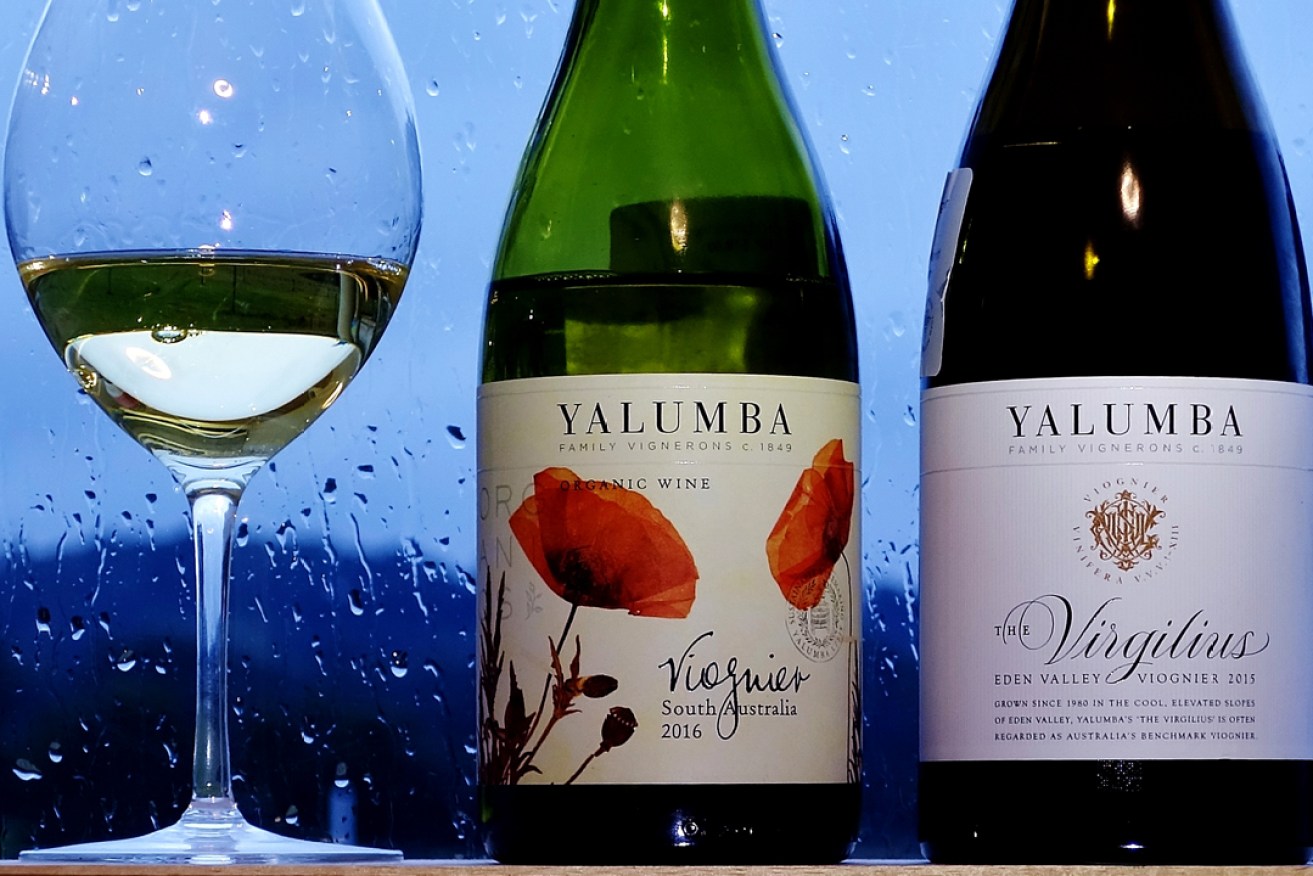Viognier: it’s not over yet
Whitey likes two new Viogniers from the company that saved it from obscurity.


In the mid-’80s, when Australia still divided its white wines into Riesling, Chablis and Burgundy classes, there was a battle around the business as to what would come next.
Those rare birds who’d actually tasted a Chardonnay from Chablis or Burgundy seemed to think that’d be the variety to plant. Semillon was still sold as Riesling. In the Hunter, in fact, all three categories – Riesling, Chablis and Burgundy – were all made from Semillon. The difference was made by the sulphur additions: Riesling got the most, Burgundy the least. All Semillon.
The Evans/Croser brigade were loudly touting your actual Chardonnay. “It’ll be the vanilla of Australian wine,” Evans preached.
In the Barossa, Wolf Blass was perhaps the first wino of influence I heard predict that soon we’d be disallowed from abusing these great French and German names because it would “confuse the marketing issue overseas”. Fully aware of Australia’s export potential way back then, he told me in 1982 that “in the long term the law will prohibit the use of these words anyway”.
We were tasting his vision of the future, his Classic Dry White, when he said that. The wine was at different times a blend of Sauvignon blanc, real Riesling, Trebbiano, Muscadelle, Crouchen, Sylvaner and Colombard; Wolf was happy to use the varieties at hand, blending to a consistent style.
“In a couple of years, Chardonnay is just a joke,” he said.
Meanwhile, Yalumba’s first highland planting of Chardonnay turned out to be Melon de Bourgogne, which came from Burgundy but was outlawed there two centuries before because of its inferiority.
However, the Hill Smiths had another card up their sleeve: for some reason they’d decided that the barely-known Viognier would be the go. From the northern Rhone, where it was added to light unripe Shiraz to give it tannin, Viognier was down to about 30 hectares total when Yalumba began to propagate it.
Called Virgilius, the first model of the outfit’s “pre-eminent white wine” emerged to great fanfare in 1998 “crafted by a promising young winemaker by the name Louisa Rose”.
Since then, Australia has seen a lot of godawful Viognier made, and a few utter beauties. After a great rush of planting, ill-researched winemaking and misunderstanding in the cellars saw it fall from favour in the marketplace, so winemakers began parking it in their Shiraz, which was mainly unnecessary, as most of our Shiraz was over-ripe and needed no tannin nor any of Viognier’s apricot and peach adding extra murk to its jammy gloop.
With this in mind, I was curious to unscrew Yalumba’s lastest. The lowest spend gets you Yalumba Organic South Australia Viognier 2016 ($18; 14.5% alcohol; screw cap). This baby smells a little peachy, perhaps like peach skin, or Ditters dried peach, but not much more than many ripe warm-region Chardonnays do. It’s just there with a hint of citrus pith, in a smooth, creamy, safe-and-homely bouquet that reminds me of the cosmetics worn by a Sunday School teacher I rather admired in my puberty.
It’s the mouth division where I expect a serious change of gear and swerve away from any Chardonnay. And here that happens: the texture is viscous, almost fluffy, and as the acid settles in the tannins become evident, very slightly hot with all those alcohols, and pleasantly, faintly gingery.
The aftertaste, the recollection upon swallowing, and the exhalation is all rather pleasant, perhaps with a zephyr of fuschia honey decorating that gingery apricot – more than peach – and unction. I’d be taking my bottle for walkies to Chinatown: Park Lok, T-Chow or Wah Hing have many delights that would take it off your hands and into your gustatories to great cheer and avail.
Yalumba The Virgilius Eden Valley Viognier 2015 ($45; 13.5% alcohol; screw cap) does not boast organic certification, but is “vegan friendly”, which makes me wonder what those folk think while they send all the skrillions of happy little yeasts responsible for this “wild ferment” into their pious gizzards.
The wine has a fine, white peach and burlap fragrance, clean, fleshy and yes, again, a little Sunday School teacherish, maybe more big city Baptist than Mallee Methodist. It’s nowhere near as simply peachy or apricotish, but much more complex and polished in an elegant, silk-and-satin manner. Its floral is along the lines of that rich white flesh of the magnolia petal, and there’s that citrus again, like the white pith of ripe limes.
The flavours are reserved and very fine; delicate yet confident and unswerving. No Chardonnay tastes or smells like this. And yes, the winemakers are at last, tentatively, letting some of the variety’s trademark tannins remain unfiltered in this glorious, stimulating confection.
So. A Viognier, a Virgilius perhaps, that has sufficient balance, finesse and poise to require no spice or smoke. I could think of nothing more appropriate than flathead fillets grilled simple and quick and dribbled with lemon. And if you’re keen to place it in its Barossa homeland, spread that fish on crusty Fechner’s Apex bread with plenty of butter. And oh alright, yes. You may grind some pepper.
Yalumba has Viognier nailed. Go try.
drinkster.blogspot.com




